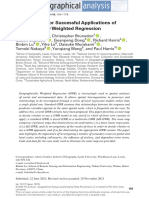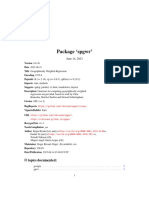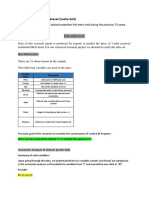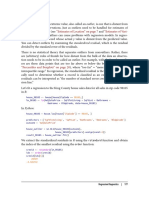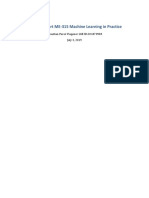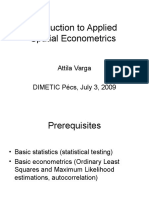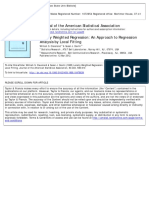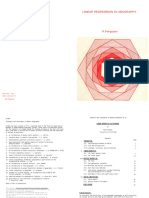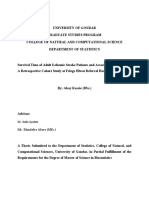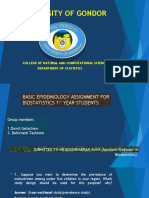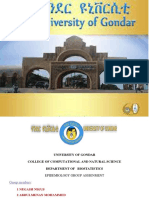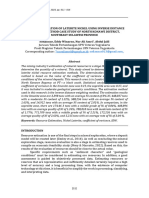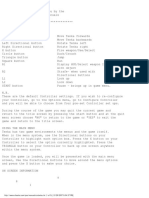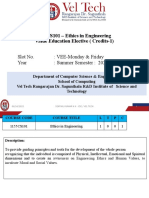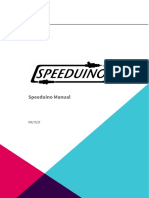0% found this document useful (0 votes)
100 views10 pagesGeo-Regression for Regional Insights
The document discusses using regional regression to model relationships that vary spatially rather than assuming a single global relationship. It proposes discovering regions where the dependent and independent variables have a strong relationship and estimating separate regression functions for each region. Examples are given showing how relationships between variables can differ in different locations and why using human-defined boundaries like zip codes may not accurately capture the underlying spatial patterns in data.
Uploaded by
Bezan MeleseCopyright
© © All Rights Reserved
We take content rights seriously. If you suspect this is your content, claim it here.
Available Formats
Download as PPTX, PDF, TXT or read online on Scribd
0% found this document useful (0 votes)
100 views10 pagesGeo-Regression for Regional Insights
The document discusses using regional regression to model relationships that vary spatially rather than assuming a single global relationship. It proposes discovering regions where the dependent and independent variables have a strong relationship and estimating separate regression functions for each region. Examples are given showing how relationships between variables can differ in different locations and why using human-defined boundaries like zip codes may not accurately capture the underlying spatial patterns in data.
Uploaded by
Bezan MeleseCopyright
© © All Rights Reserved
We take content rights seriously. If you suspect this is your content, claim it here.
Available Formats
Download as PPTX, PDF, TXT or read online on Scribd
/ 10






